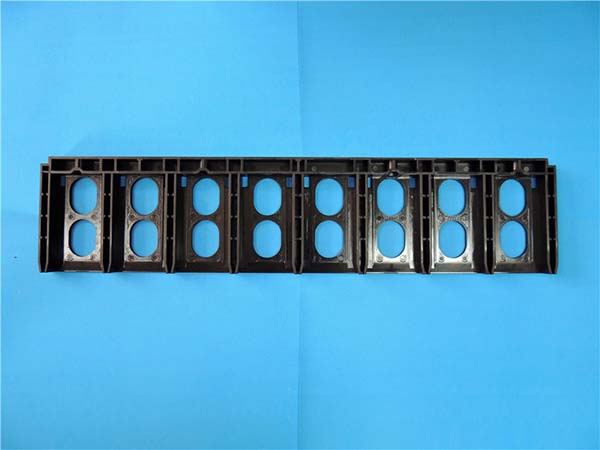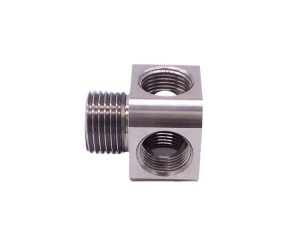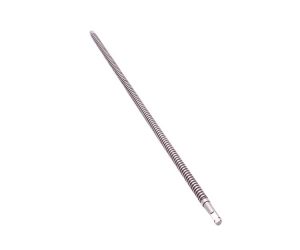Introduction
In the fast - paced world of product development and manufacturing, the need for speed, precision, and flexibility has never been greater. This is where rapid prototyping comes into play, and one of the most prominent and effective rapid prototyping technologies is Stereolithography (SLA).
What is Rapid Prototyping?
Rapid prototyping, as the name implies, is a technique that allows for the quick creation of a physical model or prototype of a product from a digital design. It serves as a crucial step in the product development cycle, enabling designers, engineers, and manufacturers to test and validate their ideas before moving on to full - scale production. This process significantly reduces the time and cost associated with traditional prototyping methods, which often involve complex machining processes, long lead times, and high tooling costs.
Understanding SLA in Rapid Prototyping
SLA, or Stereolithography, is a form of 3D printing and a leading rapid prototyping technology. It was one of the first 3D printing technologies to be developed and has since become widely used across various industries. The fundamental principle of SLA is based on the photopolymerization of a liquid resin. A high - precision laser beam is used to trace the cross - sectional patterns of a 3D model onto a vat of liquid photopolymer resin. When the laser beam hits the resin, it causes the resin to solidify, layer by layer, until the entire 3D object is formed.
For example, in the development of a new consumer electronics product, such as a smartphone case, SLA can be used to quickly create a prototype. The design team can input the 3D CAD model of the case into the SLA machine. The machine then slices the model into thin layers, and the laser beam traces the shape of each layer onto the liquid resin. After each layer is cured, the build platform moves down slightly, and a new layer of resin is spread over the previously cured layer. This process continues until the complete smartphone case prototype is fabricated.
The applications of SLA in rapid prototyping are diverse. It is used in industries like automotive, aerospace, medical, and consumer goods. In the automotive industry, SLA can be used to create prototypes of engine components, interior parts, or even full - scale mock - ups of new car designs. In the medical field, it is employed to produce custom - made prosthetics, surgical models, and dental appliances.
In the following sections, Yigu Technology will delve deeper into the advantages, limitations, and applications of SLA in rapid prototyping, as well as how to choose the right SLA materials and machines for your specific needs.
Advantages of SLA Rapid Prototyping
High Precision and Accuracy
SLA rapid prototyping is renowned for its high precision and accuracy. In comparison to other rapid prototyping technologies like Fused Deposition Modeling (FDM), SLA stands out significantly. For Yigu Technology example, the average layer thickness in SLA can be as low as 0.025 - 0.05mm, while in FDM, it is typically around 0.1 - 0.4mm. This means that SLA can create much finer details and smoother surfaces.
Let's consider a small, intricate mechanical part. When using SLA, the details of the part, such as small holes, fine threads, and delicate features, can be reproduced with a high degree of accuracy. A study by a leading 3D printing research institute found that SLA prototypes had an average dimensional accuracy of ±0.1mm within a build volume, which is far superior to the ±0.2 - 0.5mm accuracy typically achieved by FDM for the same size parts. This high precision makes SLA an ideal choice for applications where exact replication of a design is crucial, such as in the aerospace industry for creating prototypes of engine components or in the medical field for custom - made surgical implants.
Excellent Surface Finish
The surface finish of SLA - produced parts is one of its most remarkable features. When we compare the surface of an SLA - printed object with that of an FDM - printed one, the difference is quite evident. SLA - printed parts have a smooth, almost glass - like surface. Take a look at the images below:
In industries such as jewelry making, consumer electronics, and high - end product design, a high - quality surface finish is essential. For instance, in jewelry design, SLA can be used to create wax - like prototypes with a smooth surface that can be directly cast into precious metals. In consumer electronics, the outer casing of a new smartphone or a high - end audio device requires a sleek and smooth surface for an appealing look and feel. SLA prototypes can meet these requirements perfectly, reducing the need for extensive post - processing to achieve the desired surface quality.
Complex Geometry Capability
SLA has an outstanding ability to handle complex geometries. It can create products with intricate internal structures and fine external details that would be extremely challenging or even impossible to achieve with traditional manufacturing methods.
For Yigu Technology example, in the automotive industry, there are engine components with complex internal cooling channels. SLA can precisely fabricate these components, accurately replicating the complex channel designs. Another example is in the creation of architectural models. A unique building design with complex curves, overhangs, and internal voids can be faithfully reproduced using SLA. The reason SLA can achieve such complex geometries is its layer - by - layer curing process. The laser can trace the exact shape of each cross - section, regardless of how complex it is, and then build up the 3D object layer by layer. This allows for the realization of designs that push the boundaries of creativity and functionality, enabling designers and engineers to explore new concepts without the constraints of traditional manufacturing limitations.
Comparison with Other Rapid Prototyping Methods
FDM (Fused Deposition Modeling)
FDM is another popular rapid prototyping method, but it has several differences compared to SLA. Let's take a look at the comparison in the following Yigu Technology table:
| Comparison Items | SLA | FDM |
| Precision | High, with an average layer thickness of 0.025 - 0.05mm and dimensional accuracy of ±0.1mm within a build volume | Lower, with a typical layer thickness of 0.1 - 0.4mm and dimensional accuracy of ±0.2 - 0.5mm |
| Surface Quality | Smooth, almost glass - like surface, suitable for applications where high - quality surface finish is required | Rougher, with visible layer lines, often needing post - processing to achieve a smooth surface |
| Material Cost | Higher, as the liquid photopolymer resins used in SLA are relatively expensive | Lower, since FDM uses common thermoplastic filaments like PLA and ABS, which are more cost - effective |
| Prototyping Speed | Generally faster in terms of layer - by - layer curing, but the overall printing time also depends on the complexity of the model | Slower, mainly due to the mechanical movement of the extrusion nozzle |
| Material Types | Limited to liquid photopolymer resins, although the variety of available resins has been increasing in recent years | Wide range of thermoplastic materials available, such as PLA, ABS, PETG, and more |
For example, if you are creating a small, detailed jewelry prototype, SLA would be a better choice due to its high precision and excellent surface finish. However, if you need to produce a large number of simple, functional parts like small plastic brackets for a DIY project, FDM might be more suitable considering its lower material cost and the ability to use a variety of materials.
SLS (Selective Laser Sintering)
SLS is a powder - based rapid prototyping technology that also has distinct characteristics compared to SLA.
- Material suitability: SLS can work with a wide range of materials, including plastics (such as nylon), metals, and ceramics in powder form. In contrast, SLA is mainly limited to liquid photopolymer resins. For instance, in the automotive industry, SLS can be used to create functional parts made of nylon, which have high strength and durability, while SLA would require a different approach to achieve similar mechanical properties.
- Forming principle: In SLS, a high - power laser sinters powdered materials together layer by layer. In SLA, a laser cures liquid resin. This difference in principle leads to different performance characteristics. SLS - printed parts often have a porous structure due to the sintering process, which can be an advantage in some applications like filtration systems or parts that require light - weight and high - strength combinations.
- Manufacturing cost: SLS equipment and materials are generally more expensive than SLA. The high - power lasers and the need for a powder - handling system contribute to the higher cost. However, for certain applications where the use of specific materials like metal powders is essential, the cost may be justified. For example, in the aerospace industry, SLS can be used to create complex metal parts with high - strength requirements, such as turbine engine components. These parts need to withstand extreme conditions, and the ability of SLS to work with metal powders makes it a preferred choice despite the high cost.
Tips for Choosing the Right Rapid Prototyping Method
Consider the Project Requirements
- Precision and Surface Quality: If your project demands high - precision parts with excellent surface finishes, SLA is often a top choice. For Yigu Technology example, in the production of high - end consumer electronics components like the intricate casings of luxury smartphones or the delicate parts of high - end cameras, the high precision and smooth surface finish provided by SLA are crucial. However, if the project is more focused on functionality and cost - effectiveness rather than a perfect surface finish, and the tolerance requirements are not extremely tight, FDM might be sufficient. For instance, when prototyping simple jigs and fixtures for a factory production line, FDM can provide a cost - effective solution.
- Complexity of the Structure: For products with complex internal geometries, such as heat exchangers with intricate internal channels or lattice - structured lightweight components, SLA can accurately replicate these complex designs. On the other hand, if the structure is relatively simple, like a basic plastic box or a simple bracket, less complex and more cost - effective rapid prototyping methods might be considered.
- Cost Budget: The cost of rapid prototyping varies significantly depending on the method and materials used. SLA generally has higher material costs due to the relatively expensive liquid photopolymer resins. If your budget is limited, FDM could be a better option as the materials, such as PLA and ABS filaments, are more affordable. Additionally, consider the cost of post - processing. SLA parts may require less post - processing in terms of surface finishing compared to FDM, but other aspects like support removal and secondary curing should also be factored into the cost calculation.
Evaluate the Available Resources
- Equipment Cost: Purchasing or using an SLA machine can be more expensive than an FDM printer. If you are a small - scale operation or a startup with a limited budget for equipment, an FDM printer might be more accessible. However, if your business frequently requires high - quality prototypes with fine details and you can afford the initial investment, an SLA machine can offer long - term benefits in terms of the quality of the prototypes produced.
- Material Supply: Ensure that the materials for the chosen rapid prototyping method are easily available. SLA resins are not as widely available as FDM filaments in some areas. If you plan to use SLA, make sure there are reliable suppliers nearby or that you can source the resins online with reasonable shipping times and costs. For example, if you are located in a remote area, the availability of materials could be a decisive factor in choosing between different rapid prototyping methods.
- Technical Support: Different rapid prototyping technologies have different levels of technical complexity. SLA may require more technical knowledge for proper operation, maintenance, and troubleshooting. If your team has limited technical expertise, FDM, which is generally more user - friendly, might be a better fit. On the other hand, if you have access to in - house technical support or can rely on external experts for SLA - related issues, then SLA can still be a viable option despite its technical demands.
Conclusion
In Yigu Technology conclusion, Stereolithography (SLA) rapid prototyping is a powerful and versatile technology that offers numerous advantages in the realm of product development and manufacturing. Its high precision, excellent surface finish, and remarkable ability to handle complex geometries make it an ideal choice for a wide range of applications across industries such as automotive, aerospace, medical, and consumer goods.
When compared to other rapid prototyping methods like FDM, SLS, and LOM, SLA stands out in specific areas. For Yigu Technology example, its precision and surface quality far exceed those of FDM, making it the go - to option when a high - quality finish and exact replication of a design are crucial. While SLS can work with a broader range of materials, SLA's focus on liquid photopolymer resins allows for unique applications, especially in areas where smooth surfaces and fine details are required. LOM, with its large - scale model - building capabilities, has its own niche, but SLA offers more uniform strength and a wider range of material properties for smaller, more detailed parts.



